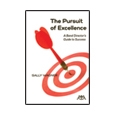Establishing a regular instrument maintenance routine will save money and frustration and will benefit students – and your program – over the long term. Here are some ways to incorporate it into the curriculum, including some checkpoints that can be used to reinforce the process in your quarterly grading cycle.
Start at the Beginning
Spend a little time at the beginning of each year going over what the students can do to maintain their instrument in good working order. Explain that one must never use anything to clean the instrument that is harder than the instrument. For example, don’t use a metal-bristled brush to clean under the rods and keys of a plastic or wooden clarinet; the metal will scratch because it is harder than the wood or plastic. Instead, use a soft brush or a folded-over craft pipe cleaner.
Some Specifics:
Flutes: A nice polishing cloth to wipe fingerprints off after each rehearsal or practice session, a soft blusher or craft paint brush to dust around the keys and rods, a swab.
Clarinets and Saxophones: A polishing cloth for fingerprints, a swab, an old toothbrush for cleaning the mouthpiece, Q-tips for removing residue from open holes.
Oboes and Bassoons: A soft cloth for wiping fingerprints, a swab, a soft brush for dusting around keys and rods, Q-tips to remove residue from open holes.
Trumpets, Euphoniums, and Piston-Valve Tubas: Mouthpiece brush (triangular shaped), oil, slide grease, a polishing cloth to wipe fingerprints off after playing, cleaning snake.
Horns, Rotary-Valved Tubas: Mouthpiece brush, polishing cloth, slide grease, oil for valves, special heavier oil for bearings in rotors, cleaning snake. Trombone F-attachment valves also need rotor oil.
Percussion: Dust instruments with soft cloth, check screws, rubber feet, etc. to make sure all are secure. Use metal polish on chimes and bells as needed; brass polish on cymbals. For mallets, trim fuzzies and lightly sand rough spots on wooden sticks.
When the end of the marking period nears, have students bring their instruments for inspection. Perhaps grade it by the alphabet: A-E on Monday, F-J on Tuesday, etc., so it only takes 10-15 minutes at the beginning of each class. This seems like a lot of rehearsal time to miss, but it is only once per marking period, and the benefits are worth it.
During instrument inspection, all moving parts must move and be freshly greased or oiled. Brass lead pipes and trombone slides must be brushed out and gleaming. All instrument bodies must be free of finger oils and prints. Mouthpieces must be clean. This keeps the students healthier and reduces the amount of bacteria floating through the air in the classroom. Even with this care, repair bills can still be in the thousands of dollars.
Creating a daily, weekly, monthly, and yearly maintenance schedule should allow your brass repairs to almost disappear, except for scheduled chem-cleans, while ongoing woodwind repairs are reduced to mostly small problems with tenon corks, little dents, and alignments.
A maintenance schedule is included below. Remind the students, at the beginning of each new month, that it is time to do the monthly maintenance. Once this routine is in place, major repairs caused by lack of maintenance should become an expense of the past.
Instrument Maintenance Schedule
Brass
Daily
• Empty water before storing. Remove mouthpiece, and wipe inside and end of mouthpiece.
Weekly
• Clean mouthpiece. Use a mouthpiece brush and rinse the brush afterwards. Do this more often than weekly if you are ill.
• Oil valves. Wipe off old oil first. This can be done more often if needed. Trombone players who use slide oil should apply it weekly or more often as needed.
• Pull all slides and unscrew all caps. Keep moving parts moving.
Monthly
• Pull all slides. Wipe off old slide lubricant and apply new.
• Rotary valves: Use the rotor oil in appropriate places.
• Use a snake to clean the lead pipe. Then use isopropyl alcohol to disinfect and clean further.
• Wipe all fingerprints off surfaces with a clean, soft cloth or polishing cloth. Vacuum the case.
Quarterly
• Pull all slides and use snake. Use paper towel and isopropyl alcohol to clean insides of slides.
• Perform visual check of all water key corks.
• Have any needed repairs taken care of.
• Vacuum the inside of the case. Spray with Lysol (or similar) or wipe with disinfecting wipe. Allow to dry.
Yearly
• Have instrument checked by professional brass technician to see if you need a Chem-Clean. Depending how much acid a player produces, and how soon after eating someone plays an instrument, this is a yearly or bi-yearly process needed to remove all plaque from the inside of your instrument. If you see green or whitish buildup in any of your slides, it’s definitely past time for the instrument to be professionally cleaned by a repairman.
Woodwinds
Daily
• Remove mouthpiece. Wipe moisture from reeds and store flat in a reed guard or similar.
• Swab all parts of the instrument, including mouthpiece, to remove the condensation.
• Rotate reeds each day. Keep four reeds in good working order at all times. (Double reeds: Keep three in rotation.)
Weekly
• Clean mouthpiece. Use a Q-tip, wooden toothpick, or old toothbrush to gently remove plaque from inner edges of mouthpiece.
• Apply cork grease to all corks. Wipe off extra.
• Wipe instrument with clean, soft cloth or polishing cloth to remove finger oils.
Monthly
• Check for residue and remove it with a Q-tip.
• Vacuum the inside of the case. Spray with Lysol (or similar) or wipe with disinfecting wipes. Allow to dry.
• Use a small, soft brush (or Q-tip) to remove dust from around keys and springs.
Quarterly
• Use a rounded pipe cleaner to thoroughly dust between keys and rods.
• Check for wear on edges of pads. Also check for leaks. If there are leaks, repair them as soon as possible.
• Polish wooden instruments with soft, dry cloth. Apply bore oil inside wooden instrument with a swab, then wash the swab and dry. (Consider keeping a specific swab just for oiling.) Polish brass/silver instrument with a polishing cloth specifically for your metal (silver, nickel, brass).
Yearly
• Have instrument checked by a professional woodwind repairman to replace worn pads and make adjustments to keys, springs, and tension screws. Do not try to do this yourself.
Percussion
As needed
• Trim fuzzies off timpani mallets. Gently sand rough places on wooden sticks. Replace cracked or split sticks. Be sure all pieces of someone’s stick bag are clearly identifiable. Replace unraveled yarn mallets or have them rewrapped.
This is a chapter from a recent book titled The Pursuit of Excellence: A Band Director’s Guide to Excellence by Sally Wagner, published by Meredith Music Publications, used with permission. ISBN 978-1-57463-137-1.





